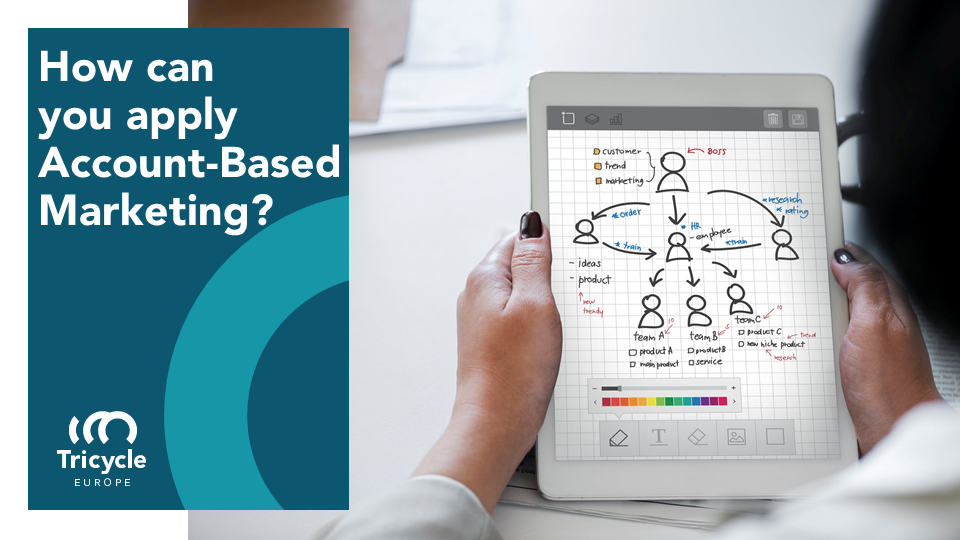Account-Based Marketing, or ABM, is a business strategy that focuses on prospects or customers as if they were their market and a significant part of it consists of creating specific content targeted for particular audiences to generate new leads or sales.
For Account-Based Marketing to be efficient, it is essential to align marketing with industry and target company strategies with sales efforts using shared content or invitations to events, webinars and more. Additionally, there are several details to consider for your ABM strategy to be effective for your business, and we have listed them for you to implement.
How can you start? First, develop a pilot program to learn what works for you. Second, apply the below steps. Third, get professional support.
Eventually, you will be able to generate positive results and convince management to further invest in the ABM strategy. The following steps will help you to enable your first ABM plan.
Identify who is your target
First of all, you will need to identify your target audiences so that your marketing campaign is successful. Since you are dealing with organisations and not people, you do not need to think about developing personas. You will require data from sales such as industry, company size, location, annual revenue, repeat purchase, etc.
Identify the decision-makers
Once you have identified your target, you need to determine who your BDMs (business decision-makers) are and how to deliver the right messages and content for them: Video, newsletter, article, webinar. LinkedIn is a great wat to uncover this data with an advanced search. It will allow the sales professionals and marketers to map out the right business decision-makers (BDMs) as well as the right insights to be addressed by the right content
Create the content for your account-based strategy
At this point, you will be ready to create the engaging content that you will use together with sales. Remember that you need to develop specific content for each of the key players you identified and it should be focused on the deals you want to make with that organisation specifically. This content should also help sales teams with what their conversations with their prospects and or customers require.
Marketing should also make visible at all times their help for sales and let them know that content should be shared based on industry/customer challenges and needs. What events are coming that may be interesting for the target audience? Are there any insights that can be useful for sales? These are some of the things marketing can continuously provide sales with.
Choose your channels
Is the content ready? Now it is time for you to choose the channels you want to use to communicate it to each of your accounts. You should not skip this step since it is essential to choose the right channels to deliver the content based on what is more effective for a given organisation or role. Is it Facebook, or maybe Instagram? Or perhaps LinkedIn instead.
Run the account-based marketing campaign
You will be ready now to run your campaign carefully. “You’ll have to coordinate your messaging across the various channels — you don’t want to send different signals to the same person within a target account,” Hubspot says. It is important to remember that organic efforts (company and employee actions) should be combined with paid advertising (via LinkedIn advertising) which will get you closer to the established goals.
Measure the results
Every campaign should have its results appropriately measured, and some of the questions you will need to ask are: Is the list of known individuals with the target account growing?; Have there been any changes to the way the accounts are engaging with the brand and its content?; How much revenue has been generated from the target accounts?

Account-Based Marketing and sales
As we mentioned briefly before, Account-Based Marketing is focused on generating efforts from both marketing and sales with the goal of “conquering” a specific account. All marketing and sales techniques have to be aligned under the same parameters to be able to focus on a target account that identifies within a market by using personalised campaigns.
For this purpose, LinkedIn, and more specifically, Point Drive is beneficial. You can find this within Sales Navigator and use it to create personalised content to create better engagement between buyers and sellers.
Everything in Point Drive can be customised, which makes it ideal to use in Account-Based and also Industry-Based Marketing strategies, and also by both marketing and sales teams since it was created thinking of collaborative work. Marketing can create great presentations with account-based content and sales can use it whenever they need it.
We want to invite you to our next webinar “Social Selling for Managers” to discover more about how to apply account-based principles in your strategy at scale. You can also follow us on LinkedIn if you want to keep up to date with everything related to the marketing world and digital sales tools.




